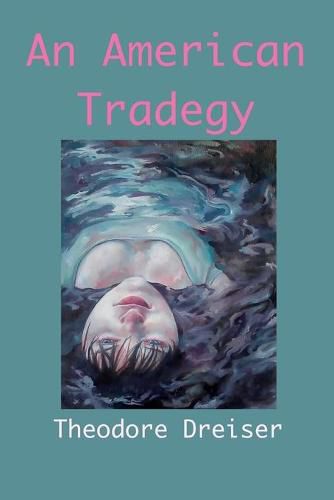Readings Newsletter
Become a Readings Member to make your shopping experience even easier.
Sign in or sign up for free!
You’re not far away from qualifying for FREE standard shipping within Australia
You’ve qualified for FREE standard shipping within Australia
The cart is loading…






This title is printed to order. This book may have been self-published. If so, we cannot guarantee the quality of the content. In the main most books will have gone through the editing process however some may not. We therefore suggest that you be aware of this before ordering this book. If in doubt check either the author or publisher’s details as we are unable to accept any returns unless they are faulty. Please contact us if you have any questions.
The author based the book on a notorious criminal case. On July 11, 1906, resort owners found an overturned boat and the body of Grace Brown at Big Moose Lake in the Adirondack Mountains of Upstate New York. Chester Gillette was put on trial, and convicted of killing Brown, though he claimed that her death was a suicide. Gillette was executed by the electric chair on March 30, 1908. The murder trial drew international attention when Brown’s love letters to Gillette were read in court. Dreiser saved newspaper clippings about the case for several years before writing his novel, during which he studied the case closely. He based Clyde Griffiths on Chester Gillette, deliberately giving him the same initials.
This novel is full of symbolism, ranging from Clyde’s grotesque description of the high gloomy walls of the factory as an opportunity for success, symbolizing how it is all a mirage, to the description of girls as electrifying to foreshadow Clyde’s destination to the electric chair; Dreiser transforms everyday mundane objects to symbols.
Dreiser sustains readers’ interest in the lengthy novel (over 700 pages) by the accumulation of detail, and by continually varying the emotional distance of his writing from Clyde and other characters, from detailed examination of their thoughts and motivations to dispassionate reportage.
$9.00 standard shipping within Australia
FREE standard shipping within Australia for orders over $100.00
Express & International shipping calculated at checkout
This title is printed to order. This book may have been self-published. If so, we cannot guarantee the quality of the content. In the main most books will have gone through the editing process however some may not. We therefore suggest that you be aware of this before ordering this book. If in doubt check either the author or publisher’s details as we are unable to accept any returns unless they are faulty. Please contact us if you have any questions.
The author based the book on a notorious criminal case. On July 11, 1906, resort owners found an overturned boat and the body of Grace Brown at Big Moose Lake in the Adirondack Mountains of Upstate New York. Chester Gillette was put on trial, and convicted of killing Brown, though he claimed that her death was a suicide. Gillette was executed by the electric chair on March 30, 1908. The murder trial drew international attention when Brown’s love letters to Gillette were read in court. Dreiser saved newspaper clippings about the case for several years before writing his novel, during which he studied the case closely. He based Clyde Griffiths on Chester Gillette, deliberately giving him the same initials.
This novel is full of symbolism, ranging from Clyde’s grotesque description of the high gloomy walls of the factory as an opportunity for success, symbolizing how it is all a mirage, to the description of girls as electrifying to foreshadow Clyde’s destination to the electric chair; Dreiser transforms everyday mundane objects to symbols.
Dreiser sustains readers’ interest in the lengthy novel (over 700 pages) by the accumulation of detail, and by continually varying the emotional distance of his writing from Clyde and other characters, from detailed examination of their thoughts and motivations to dispassionate reportage.